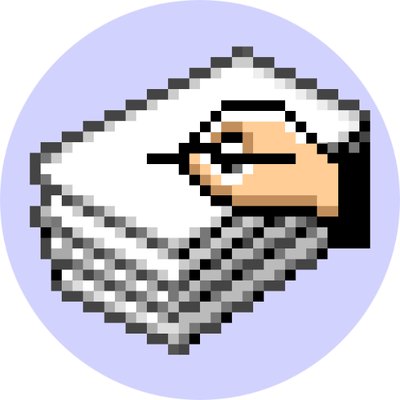The Backstory – How Cheaper By the Dozen Changed My Life

 In the spring of ’96, I stood in a poorly lit computer shop, questioning the local Apple repair technician about how to make computer programs. He presented me with two options: Coding or Building Educational Decks in HyperCard. Little did I know that the choice would determine the course of my life.
In the spring of ’96, I stood in a poorly lit computer shop, questioning the local Apple repair technician about how to make computer programs. He presented me with two options: Coding or Building Educational Decks in HyperCard. Little did I know that the choice would determine the course of my life.
That summer, I made Bulletin Board Service (the precursor to the internet) classics such as “Online Jargon” (which taught new users foreign slag like LOL and 😉 and educational apps using HyperCard as I worked to make titles like Orgean Trail 2 look obsolete. My mother would drive me to the home of an old professor so I could get help using these tools. I didn’t have a scanner or clipart, so I faxed images to my computer to use in my designs.
I had never heard the word “Instructional design.” Still, I was already forging into a field that wouldn’t explode until 2002, when Storyline would shake the world with interactive deck training, not unlike the black-and-white HyperCard I had learned years before. Gamification hadn’t yet been “invented,” yet my goal was already to make learning fun.
Sometime later, my life changed again when I read the book “Cheaper By the Dozen” by Frank B Gilbreth. Frank Sr quickly became my hero, my kindred spirit. Frank is an efficiency expert and industrial engineer from the 1910’s and 20’s who made learning fun and efficient. He taught his family Morse code as a game, turned bath time into a streamlined event, and used his family as ginny pigs in his efficiency experiences. He leveraged what are now considered core drivers of human motivation (gamification) to teach his kids skills like foreign languages and typing. I was in awe. What he did was everything I loved.
To make things even better, my Uncle had many of these skills. He had already gifted me his copy of Photoshop 3.0 along with other design tools, which took my graphic design to the next level. I wish I had learned more from him.

Sharing knowledge became a huge part of my identity. As a teenager, I ran my own dial-up bulletin board service for my friends. Then, the internet came, and a world of knowledge opened up. I started creating websites and writing ebooks, earning a substantial sum for that time. In college, I became a physics tutor and fell in love with aviation. I created a dozen ebooks that I used to fund my aviation training. Sharing knowledge gave me tremendous financial freedom.
Fast forward several years to when I worked for Apple as a consultant. Much of my work involved training various staff, holding public training events, and improving the efficiency and sales of those mini Apple stores in places like Best Buy. It was only a short time before my passion for improving processes and influencing corporate education showed up in the numbers. Each week, I ranked the top numbers in Canada for growth in my area as small incremental changes (and a few large ones) compounded into explosive growth. I was loving it. Since I was commissioned-based, I quickly became expensive. Each quarter, my manager increased metrics and goals by a staggering 50%, and I found a way to exceed them each quarter. Eventually, I expressed dissatisfaction that I was doing more and earning less each time they raised my quote by 50%. Eventually, I told them it wouldn’t be mathematically possible if they did it again. They raised the metrics by 50%, and we parted ways. When I submitted my resignation, they attempted to make amends, but at that point, I had learned several important lessons—the most important being that the highlight of my day was teaching people and that education was where I belonged.
I went back to school to get an education degree to teach Physics. I had always wanted to teach, but in the United States, teaching didn’t pay enough for my desired lifestyle. But back in Canada, you could earn a comfortable six-figure salary, and the working conditions were better. I quickly became the most tech-savvy teacher the school had ever seen. My skills in instructional design came into play. Making interactive whiteboard games is a breeze when you’ve been using HyperCard and Storyline-style apps since you were a kid.
Around this time, my tutoring company started to transform into a curriculum development company. I built my first Learning Management System, “Social Learner.” It was a first of its kind, with gamification built right in. I used it to develop my math and science courses and reduce my grading and development load by automating question generation. My first teaching assignment had me teaching four different math and science courses that first semester, so any automation was essential to survival. But as it turns out, fortune favors the prepared.
During a staff meeting, I heard the principal talking about an online program they were considering purchasing. I managed to convince him to let me build it using my existing platform and that I could get the five courses built before the start of the next semester. I spent every evening creating storyboards and lessons, filming videos, and creating badges for the course. It was a vast undertaking to accomplish so much in just a few weeks. Despite the short turnaround, I produced a highly professional and branded course. Naturally, I iterated it as we went, improving based on student comments.
We ran the program in a way that took advantage of the way the government funded the school. To encourage students to sign up for this extra course load, we said that anyone who completed the course would get a free Chromebook to keep. The turnout was enormous. The initial pilot was expected to be in my classroom. Still, almost every eligible student in the school showed up, so we moved the event to the cafeteria. The completion rate was through the roof, at nearly 90%. I was given the district’s highest award for new teachers, as the program funded enough computers for the entire high school and the neighboring middle school.
Toward the end of the project, I let the principal know that I was getting married and needed to move to the United States so my wife-to-be could finish medical school. Rather than abandon our plans to create the sequel to this successful curriculum project, the district hired me as their first remote teacher. It was perfect since, as an immigrant to the United States, I would need to go without a Green Card and be the sole income earner. In addition, we would spend the next six months of our lives functionally homeless as we traveled the country touring hospitals. Building a curriculum and teaching online was the ideal blessing for our situation. It also provided essential data that allowed me to make massive improvements to online education and student engagement.
As the years went by, I continued to develop a curriculum and educational tools and to teach. I would later get a masters in instructional technology and transform instructions like East Carolina University, Instructure, Tarrant County Colleges, Excelsior Charter Schools, Alabama Community Colleges, and many others with the tools, content, and curriculum that I would innovate.
I’m a firm believer in working smarter and harder. I continue to take pleasure in finding ways to not only do more with less but to continually make things exponentially better in a fraction of the time. I’d like to think Frank B Gilbreth and his car full of 12 children would approve of that choice I made so many years ago—to take the road less traveled and build a better world through engaging education.
P.S. I learned after writing this that Frank’s wife Lillian was just as incredible as he was!







Responses